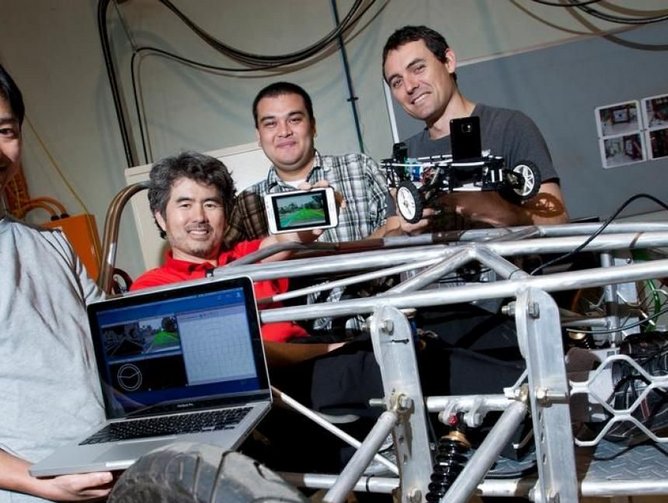In 1971, Griffith University was founded with a visionary intent: to be a thoroughly progressive experience for its students and a hub of influence for the Pacific Region’s academic community. That vision continues to inspire Griffith University’s goals today. With five campuses throughout Queensland — including its Gold Coast campus, poised as a cornerstone of the region’s vibrant, planned Parklands Project — and significant technological updates, Griffith University continues on its path as an institution on the cutting edge.
Driving the University toward progress
The IT department at Griffith University has been instrumental in undertaking several initiatives to enhance the institution’s efficiency and communication — from cloud-based infrastructure for its learning management system to heightened collaborative capabilities with virtual desktops and video calling.
“Over the last couple of years, we’ve been on a drive — particularly around agility, alignment, and flexibility — and we’re continuing that drive today,” says Bruce Callow, Chief Technology Officer for Griffith University. “We’ve evolved from a purely technology-focused department to one where we are partnering much closer with academic and business areas and pushing the boundaries of information management.”
This has involved making foundational changes in the way that Griffith University handles technology—prioritising it not just as a peripheral, but rather as an important tool that can enhance all aspects of university life.
“We are working with the organisation, getting it to treat information as an asset and managing it accordingly, then bringing on the technology to support it as well,” says Callow. “For a university that’s operating in a highly competitive local and global environment and looking to undertake change, we need to align our technology services with the major changes our university’s going through, and do this in the most cost effective way. All this while ensuring that the underlying foundation for critical systems is resilient.”
Communication and inclusion
Griffith University consists of five campuses, spanning from Brisbane through to the Gold Coast. While they are close enough for academics and administration to travel between them for meetings and conferences, Griffith University has invested heavily in unifying its campuses with online communication and collaboration capabilities—and is already seeing positive results.
“That program is on track to deliver just under $1 million in travel savings per year, and that’s only local travel savings,” says Callow, adding that both the savings and the opportunities that this initiative provides on a wider scale are invaluable. “It has increased the ability for global research collaboration, and we are obviously opening up our capability for a global student environment.”
Strategic partnerships for mutual growth
Griffith University has propelled its IT improvements forward even further by strategically partnering with technology powerhouses like Cisco, Oracle, and Microsoft. By fostering a strong rapport and realizing mutual benefits, the university has been able to create ongoing trusted relationships with these partners for multiple projects through the years.
“We’ve had a strong strategic partnership as far as Cisco goes for some time—we worked with them around our unified collaboration, and that was a very big driver and cost saver for us,” said Callow. “Subsequently they came onboard to further our relationship, particularly around their smart building capabilities.”
Cisco partnered with Griffith University most recently on the Sir Samuel Griffith Centre, a six-star green building, constructed with the assistance of a federal government grant. This teaching and research facility is designed to operate for up to seven days off the electricity grid, through features like a hydrogen fuel cell and solar cells across its roof and siding, and has given Cisco and Griffith a chance to push their boundaries, while helping the university in the process.
“The building has allowed us to work within smart building design and to trial appropriate technologies such as extensive use of POE and virtual desktop environment delivery and management. All precursor work to moving the University to a virtualized digital workspace service,” says Callow. “On a good sunny day it actively feeds electricity back into the grid for the rest of our buildings on campus.”
Maintaining security in a connected world
As Griffith University increases its connectivity, operational complexity and utilisation of cloud services, one of the largest challenges for its technology department is making sure that information assets stay safe and secure. According to Callow, cyber security is a top priority for his team.
“Our fight there just continues to grow, and the cloud-based scenarios continue to complicate the environment and architecture,” he says. “We find that the new students and faculty are far more technology savvy and are in fact placing demands upon us for technology they want to use. There are many cloud-based services available that can assist them in putting their lecture content together, help them deliver presentations, and bring modeling and visualisation aspects that they can deliver. There are not hundreds but literally thousands of cloud-based services that academics, researchers and staff are looking to use. With some of those, particularly when you come down to the fine print, there can be issues and concerns around the contractual arrangements, intellectual property and privacy. So while I need to ensure they have access to appropriate tools and services, my problem is how to add governance around that to ensure that cyber security, intellectual property and privacy controls are in place. These controls must, at the same time, be balanced with the agility and flexibility in allowing them to use it.”
The challenges increase as his team must analyse whether new cloud services are up to both governance standards and the university’s own cyber security requirements. To streamline this process, Griffith University’s IT team is exploring ways in which users can actually help gauge the safety of services and identify issues, thereby preventing a governance bottleneck and leaving the department free to tackle the most serious issues.
“We have to drive for agile process and capability, where the users can actually do some self-checks around these systems they need to use,” said Callow, adding that a service which failed to meet requirements during a self-check would be subject to a more thorough investigation by the IT department. “If we can deliver that agile approach, without always referring the user back to us, the IT department moves away from being the bottleneck. It’s really getting that balance of security and flexibility, and taking a risk-based approach to our decision and approval making.”
Striking a balance
“There are four terms I’ve been driving for a while now with my staff: agility, flexibility, alignment and efficiency,” says Callow. The department is focusing on achieving these terms by striking a balance across the three domains of partnership, development, and support for the new initiatives once they’re in place. As well, Griffith is undertaking to change its approach to sourcing information and technology services through establishing strategic partnership arrangements that will accelerate the use of cloud based services and utilise an ‘as-a-service’ model. As Griffith University continues with its tech initiatives, the balance across agility, flexibility, alignment and efficiency comes ever closer to falling into place.






